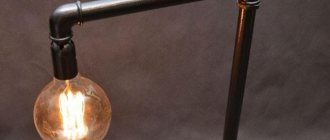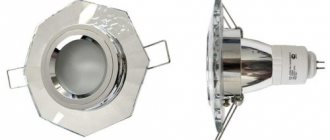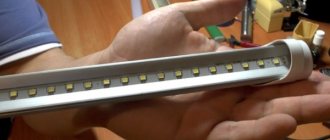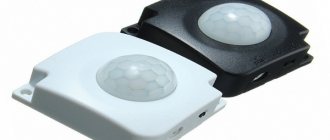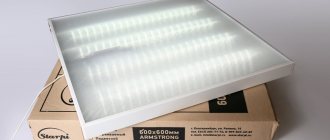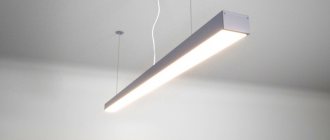Lighting plays a major role in creating a cozy, comfortable, harmonious atmosphere in an apartment or house. An important place in the development of interior lighting design ideas is occupied by wall sconces, made in the most unusual design solutions.
Wall sconces are lighting devices designed for local lighting, installed against the wall and having a personal switch. The direction of the light flow and its contrast will depend on the type of lampshade or lampshade.
Design characteristics of wall sconces
The main purpose of wall sconces is local lighting of the room. The device consists of a main body, a light diffuser, a switch and a light bulb. Depending on the style solution, various materials are used to develop the lighting design.
The body of modern products is most often made of stainless steel and aluminum; there are some models with a main part made of solid wood, rattan palm and other natural materials. Lampshades and lampshades are made from glass, textiles, plastic and eco-leather.
In most cases, lamps consist of several shades. Crystal and porcelain wall sconces decorated with Swarovski rhinestones, mosaics or precious stones will add a luxurious touch to any room.
When decorating a room with lamps, the emitted light plays an important role. The following types of light bulbs are built into these devices:
- Incandescent or Edison lamps. They are characterized by strong heating and consumption of a large amount of electricity during operation.
- Halogen bulbs. They use less electrical energy, but just like incandescent lamps, they have a strong heating ability.
- Energy-saving lamps. The name speaks for itself: this type of lamp saves electricity very well, but they contain mercury, which is due to the slow combustion of the device.
- LED light bulbs. They differ from others by incomparable advantageous characteristics: low energy consumption, high light output, pronounced, pleasant, harmonious light distribution.
Photo sconce
DIY chandelier - manufacturing instructions and master class on creating design modelsIncandescent lamp: design, application and connection features (85 photos)
Dimmable LED lamps: detailed description of the device, selection and tips for using dimmable LED lamps
Read here! Chandeliers for suspended ceilings - selection rules and review of suitable types of lamps (110 photos)
Functions of wall lamps
Designer wall lamps, sconces, are highly versatile.
The main functions of lighting devices include:
- Auxiliary local lighting. To perform specific tasks (reading a book, creating an outfit for a party), local lighting is used in the form of wall sconces. Lighting fixtures of this type are often used in corridors and staircases.
- Basic lighting in small rooms when it is impossible to install a large chandelier. Such devices visually expand the space thanks to the uniform distribution of soft light.
- Dividing space into zones. With the help of light, you can zone large rooms, making them more functional and calm.
- Highlighting the main or significant interior item using light. Properly installed wall sconces can divert attention from architectural flaws or other minor deformations, making them less noticeable.
- Aesthetics of the room. Modern wall lamps look like a real work of art. With the help of luxurious lighting structures, spectacular interior decorative compositions are formed.
Sconce purposes
Local lighting. In this case, sconces perform their main function - illuminating part of the room.
Decorative lighting. It is used to create a certain atmosphere - solemn, cozy or intimate.
Replacing the chandelier. Such small objects will look great on stairs, in hallways, closets - all those places where it is impossible or not functional to attach ceiling chandeliers or install spots.In addition, such lighting will make such a room unusual and give it charm.
Using different sconces in one room will help divide the room into zones. The use of wall lamps will perfectly highlight a relaxation area in the living room, a dining area in the kitchen, a work area in a nursery or office.
Sconces can also serve a purely decorative function, decorating the room and emphasizing its design. Both classic lamps and sconces in the Art Nouveau style can be used here.
Sconce: types of lampshade design
- Closed. Various geometric shapes of the lampshade made from transparent or frosted glass, textiles, and metal.
- Half sconces. Small lamps with a crescent-shaped shade.
- Directional light devices. Most often they are presented in a rotating design with one lamp. The direction of light of this type of wall sconce can be adjusted to your needs, while highlighting the necessary items in the interior.
- Candles. Decorative devices reminiscent of antique candlesticks. Many manufacturers have incorporated modern materials and light response effects methodology into the classic form of wall sconce fixtures.
Each of these lighting devices has its own room decoration functionality. Archaic lanterns, elegant flower arrangements, single candlesticks or entire candelabra with crystal branches - there are a great variety of types and sizes of wall sconces.
Application of sconces
Wall sconces serve as an element of decoration and lighting in any room. Placing several identical lighting devices in a narrow corridor space will help create an original appearance.
An excellent interior solution would be to place compact lamps near the doors.
In addition to the corridor, wall sconces can be used in various rooms and even in the bathroom.
- Bathroom lighting. In a hygiene room, wall sconces are usually placed above the mirror or on the sides to improve the quality of lighting in the room. The main parameter for matching a sconce for a bathroom is its level of moisture resistance.
- Bedroom lighting. In the bedroom, wall sconces create a special intimate atmosphere. Most often, such lighting devices are placed in the area above the bed or above the makeup table.
- Kitchen lighting. The best option for placing sconces is in the dining or dining area. Sconces on flexible legs will allow you to correctly direct the light beam to the required surface, as well as adjust the degree of brightness using special mechanisms. Living room lighting. Wall sconces will bring special comfort and harmony to the guest room. With the help of lamps located on the walls, you can effectively zone the space, highlighting a recreation area or a certain type of leisure. The original location for sconces is the space above the sofa or fireplace.
What to look for when choosing a sconce?
It should be noted that each lamp is selected individually in accordance with the features of the interior or the assigned tasks. Next, we will consider the most significant parameters that you should pay attention to when choosing a sconce.
Style
Any room or a single wall, the piece of furniture on it can be made in various design versions: classic or modern.
And for each of them its own type of sconce will be appropriate:
- Classic - sconces are made in the form of antique lamps with a metal frame and a glass body or an imitation of it. Suitable for wallpaper in the same style, mirrors with forged frames or imitation forging.
- Eco - characterized by a sconce with a wooden lampshade, similar to natural stone, goes well with a mirror in a wooden frame, a wooden headboard, etc.
- Modern or high-tech - preferable for rooms with a modern design; they go well with straight lines of the interior, futuristic shapes, etc.
- Minimalism - suitable for spacious, free spaces, not burdened with unnecessary details.
- Ethno - suitable for the category of rooms decorated in oriental colors, country, Japanese motifs and the like.
- Provence - made with lace lampshades, they look very elegant and attractive.
- Loft - many models of such sconces are considered universal lighting devices, as they do not have any unnecessary parts. However, the lighting equipment itself will add a certain touch of antiquity.
When choosing a specific lamp, keep in mind that although style helps to design the entire composition in one format, it is not always the determining factor for the adoption of a specific model.
Functional
The main function of any sconce is lighting, so all additional options relate to control processes. So, all models are divided into stationary and rotary. The first of them are suitable for clearly defined objects - beds, mirrors, which do not move in space. The second option is used near the table, reading chair and other interior components where the light flux needs to be moved.
Shape and size
Neither the dimensions nor the shape of the sconce are practically limited in any way, thanks to which you will find a wide variety of options on sale in the form of a ball, cone, pipe, disk, etc. Some of them require a large space, others only need a small area on the wall. However, note this feature: the external dimensions of the sconce must be consistent with the element of the interior to which it belongs. You should not choose a sconce that is visually larger than the mirror it illuminates.
Lamp type
By type, all lampshades can be divided into three large groups:
- open - the lighting lamp in such ones is either not covered at all by the lampshade, or partially, and there are sconces in which the lampshade is made transparent in the shape of a lamp bulb.
- closed - made with solid shades in which the lamp remains closed.
- halves - the lampshade covers only part of the lighting fixture, so the light receives a certain direction.
Electricity supply method
Power supply from an external network to the sconce can be carried out through a classic connection with a plug, but we immediately note that this method is used extremely rarely. Since hanging wires look contrasting in interior design and can ruin the entire composition. Exceptions are some types of sconces that are specifically designed for such a connection.
The most common option is sconces with direct connection to the electrical network. The wire is hidden in the wall, and is connected to the supply wires by soldering, crimping or terminal connection in accordance with clause 2.1.21 of the PUE. There are a majority of such models, but the method of supplying power to them is either through a key switch or through a button on the device body. Recently, smart sconces with a remote control have appeared.
Power and number of lamps
The power is selected depending on the purpose; in some rooms, the owners use sconces instead of a chandelier, then the provision of light flux rests entirely on wall lamps. Therefore, in accordance with the requirements of SanPiN 2.2.1/2.1.1.1278-03 and SP 52.13330.2011, you will need the following illumination:
- 150 LK in a living room or kitchen;
- 200 LK for the nursery;
- 50 LK for a bathroom or toilet;
- 300 Lux wherever you perform actions with increased visual tension;
- 400 – 500 Lux for surfaces of work tables and desks;
- 20 – 30 Lux on stairs and backlights.
The number of lamps depends on the goal, so if one is not enough for you to obtain the desired luminous flux or symmetry is required for design reasons, then their number is selected accordingly.
Light distribution method
There are four ways to distribute light from sconces:
- directional - emits a luminous flux to a specific area, focuses all the light for a specific task;
- semi-directional - the light is partially scattered, but mainly distributed in a given direction;
- uniform flow - redistribute light along a certain area;
- dissipative - the flow is directed into the surrounding space throughout the entire volume of the lamp.
It should be noted that sconces with light directed upward visually increase the height of the ceiling. As for models with reverse flow direction, they will make the room visually lower.
Features of sconces in style directions
Sconces in a classic style have the following characteristic features:
- moderate grace;
- elegance of lines;
- the splendor of decoration (can be seen especially in the Baroque and Empire styles);
- sophistication and simplicity of figures;
- use of exclusively high-quality raw materials - glass, bronze, crystal, metal;
- a consistent, light palette of colors without acidic and deep variegated shades, the presence of monochrome and pastel colors.
Classic wall sconces are presented in numerous variations and fit perfectly into many interior styles.
Modern wall sconces:
- simplicity and conciseness of shades;
- creating a universal appearance by using several classic shades in production;
- giving a feeling of lightness and simplicity;
- graceful, soft, even lines without massiveness and heavy forms of lampshades;
- a combination of classic traits and openness to new things;
- elegance and luxury, compatible with loft, hi-tech and minimalism styles.
Distinctive features of Tiffany lamps:
- creating a magical space with the help of a product;
- stained glass art made from pieces of multi-colored glass;
- original lighting equipment;
In some spaces, Tiffany wall sconces act as a decorative element, in others they create an eclectic addition.
Modern style sconce:
- relevance and versatility of lighting devices;
- pronounced technicality;
- lightness of geometric shapes;
- inexpensive materials;
- straight lines;
- the use of steel, aluminum and plastic instead of gold and bronze;
- minimalist decor.
Advantages of wall lamps
Wall sconces have the following advantageous characteristics:
- Versatility and wide range of use. Sconces perfectly complement the interiors of living rooms, bedrooms, offices, children's rooms and even bathrooms and kitchens.
- Comfortable operation of the device thanks to its own switch.
- Miniature devices for creating light.
- Lightweight. The equipment can be installed even on plasterboard walls.
- Unusual design solutions and a variety of shapes and color options for devices.
- Low energy consumption compared to classic multi-shade lamps.
How to properly use wall lights in different rooms
You can install sconces in any room, from the nursery to the hallway. Below we will describe the features of placing sconces in rooms such as the bedroom, living room and bathroom.
In the bedroom, wall lights are traditionally installed above the dressing table or at the head of the bed. In this room, the task of the sconce is to create soft, dim lighting that will promote relaxation.
In the living room, it is better to place wall lamps next to the sofa, near the bar counter or fireplace. In this room, sconces will complement the main lighting and act as decoration.
In the bathroom, the most important thing is the lighting of the mirror. It is next to this element that paired sconces are placed. However, often in small rooms of this type, wall lamps successfully replace ceiling lighting elements.
Now you know in which places in the main rooms it is better to install sconces. The photos given in the article will help you correctly place wall lamps.
Existing disadvantages
- To install wall sconces with a built-in switch, you need to think about its placement in advance in order to hide the existing wiring in the wall until the final finishing at the plastering stage.
- Often, the purchase of wall lamps occurs at the stage of completion of repair work, when the walls are already covered with wallpaper or paint, and the wiring for the lighting device has not been installed in advance. In this case, it is better to buy models that connect to the power supply and have a switch on the wire; however, this design looks less practical and aesthetically pleasing.
Properly selected and placed wall sconces will be an elegant decorative addition to the design of any room. The variety of shapes and options for creating an interior interior, as well as the versatility of such lamps, makes them increasingly popular in the lighting market. With a competent approach to choosing a lighting device, you can use it to create a special atmosphere of warmth, tenderness, romance and comfort that you need.





